
In the world of ecommerce, conversion rate is an important metric. You could spend all the money in the world on bringing people to your website, but if you can’t get them to make a purchase, you’re throwing money down the drain. On the flip side, improving the conversion rate of your existing traffic by tweaking your strategy is an excellent way to keep your budget lean by optimizing what you already have.
A purchase from any online shop is a step-by-step process, from the moment the user discovers your site to the moment they hit the “Thank You” page. We call the individual steps of this process the customer’s buying cycle. This blog post breaks down the key stages of the buying cycle and offers strategies for optimizing each stage.
The Phases of the Buying Cycle
Before we dive in, let’s summarize the stages of the buying cycle:
1. Attract. At this stage, your primary goal is to attract a potential prospect to your store. Most of the strategies in the “Attract” (also sometimes called “Awareness”) stage are what we’d commonly associate with broader marketing strategies, but conversion optimization plays a role in whether people click on an ad, choose your site from the search results, or otherwise visit your site in the first place.
2. Intent. At this stage, a customer shows an intent to buy a product or performs actions that lead to their final purchasing decision. They have decided that they want to buy the product but they haven’t chosen your shop yet, so they’re browsing your website to learn more.
3. Purchase. This stage might sound simple— it’s when the customer makes the purchase — but it’s actually where all the abandoned cart strategies are housed, and it’s a significant cornerstone of conversion.
4. Repurchase. Also called customer retention, this is the stage that involves your customer coming back to your shop again.
At each stage, there are a wealth of strategies that can help you optimize the customer’s journey.
1. Attract
How do you attract customers in the first place? By providing the information your audience needs and piquing their interest before they land on your site. The strategies here can encompass a very broad set, but some are more conversion-friendly than the others. Here are some great ways to increase actionable awareness:
Direct impact is a lot easier to measure than indirect, but they both hold an equal amount of weight.
Social Media
Social media is more than just scheduling updates and promoting various offers. Its efficiency is gauged on how much engagement you have generated through the social media platforms you’re using, and how many of these engagements have either directly or indirectly led to revenue. Direct impact is a lot easier to measure than indirect, but they both hold an equal amount of weight during this crucial part of the awareness funnel.
Case Study: HauteLook
Owned by Nordstrom, HauteLook is a members-only “event” shopping site. The website curates limited-time, exclusive shopping events with discounts up to 75%.
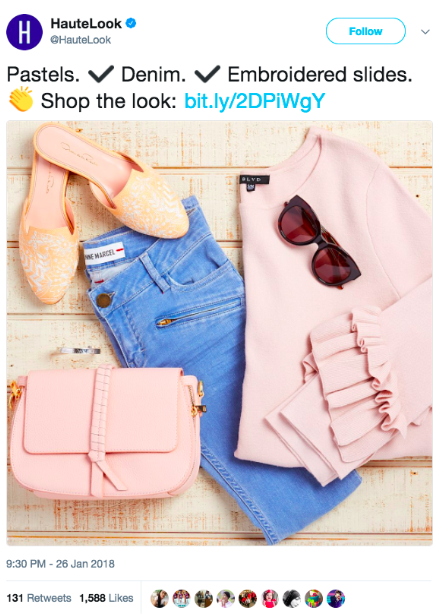
Because they’re an apparel-based ecommerce venture, the brand bases their social media strategy on promoting different “looks,” based on events, seasons, and emotions. Their on-point styling has brought 100k+ followers to the company’s Instagram page.
Haute Look’s Pinterest account, too, stands out as a curated collection of “looks” and apparel, which cultivates an entire lifestyle that their target audience can relate to.
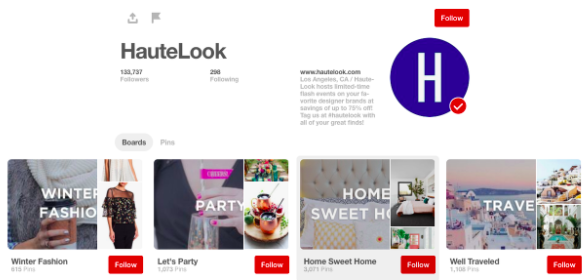
Advertising
When you are trying to create awareness and attract customers, online advertising is one of your primary weapons. It often starts moving the needle before the other strategies do, making it an important way to kickstart a business or keep it healthy.
Common forms of advertising you can consider include:
-
PPC Campaigns: Pay-per-click (PPC) advertising is a popular form that allows businesses to purchase ads — sponsored at the top of search results or on a social platform, for example — and only pay when someone actually clicks on the ad. The amount they pay will vary based on the competitiveness of the target keywords and a variety of quality factors.
-
Retargeting Campaigns: Retargeting shows the user ads about a product or website they’ve visited before, with “reminder” frequencies that range from an hour to a few days. Google, Facebook, Twitter, and LinkedIn are all platforms that facilitate retargeting.
-
Mobile Advertising: Advertising on mobile phones primarily occurs through apps that allow ads. A few third-party application repositories also promote ads.
Partnering with Influencers
A new form of attracting and creating brand awareness is partnering up with influencers, especially on social media. The uniqueness of this proposition is that you enter the stream of influencers who already have a trusted radius of followers. Advertising with these influencers requires proper planning and an offer that benefits both parties.
2. Intent
At this stage, the visitor has shown an interest in your business or products — usually by visiting your site. This is the stage where the visitor mindset is still volatile, so your goal is to address uncertainties and provide ample information to your visitors such that it reinforces their intent to buy the product.
You can boost confidence and action at every stage of the customer’s interaction with your website:
Use Lead Magnets and Clear Calls-to-Action
Chartbeat states that you have 15 seconds to grab a prospect’s attention and turn their attention to your store or you risk losing them forever. So, make it count. Start by displaying your best offers and incentives up front, focusing on the problem you’re solving for the customer. Make sure your message is clear and that it connects - you can even try a few if you want, and A/B test them or compare their performance.
Images grab people before words do.
Bold, compelling imagery that tells the story of your brand is essential, as images grab people before words do. You can also use lead magnets like exit-intent pop-ups and sliders: if your visitors decide to leave, entice them with an offer or invite them to reconnect in the future. Use pop-ups sparingly because overwhelming your audience with them can have the opposite effect.
Optimize your product and category pages
From photo size to the right amount of text, conversion optimization counts on a product page. Finding the right balance between giving your customer enough information without overwhelming them is key.
Start by delving into your customer journey, and identify the products and pages that strongly resonate for your customers. You can use this information to inform your choices about how you market your other products.
Evaluate Your Value Proposition
At the heart of your product messaging lies the value proposition: why the customer should pick your product instead of the competition’s. Put yourself in the customer’s shoes and think about the need you can fulfill for them, and then make sure this is clearly communicated on your product page.
Back your value proposition with:
- Clarity. Showcase what the product is intended to do, and make sure your ideal prospects understand everything they should know about the product in the simplest way possible.
- Appeal. Highlight everything that is great about the product to start reinforcing the decision.
- Credibility. Social proof counts more than ever today, so back your product’s value proposition with testimonials and reviews.
Optimize Your Forms and Website Navigation
A key detractor at the intent stage can be forms and website navigation that isn’t user-friendly.
When addressing Forms, try to adopt a minimal query approach and make sure you’re only asking your customers to fill out a form when necessary. As this case study shows us, less is more when it comes to forms.
Dig deeper into your website’s analytics, implementing heatmaps and audience flow monitoring tools to track how people are using the site.
Now, let’s talk about the navigation bar. Rather than simply assuming a standard navigation is the best approach, dig deeper into your website’s analytics, implementing heatmaps and audience flow monitoring tools to track how people are using the site. Then update the navigation to make this even easier for them, eliminating as many “clicks” as you can to get to what they want.
Show Your Customers Related Offers
Your customers are still not ready to buy from you at this stage, but they have ample curiosity. So, offering them relevant product recommendation and discounts might help you take them forward, and it can even increase their average order value by reminding them what else they might like. This is called nurturing your prospects.
Amazon does this well. It watches its customer’s journey carefully and sends out emails and focused ads that highlight relevant products and offers. For example, in 2018 my New Year’s resolution involved running, so the first thing I did was browse Amazon to check out their running gear. The next day, I got the email below in my inbox:
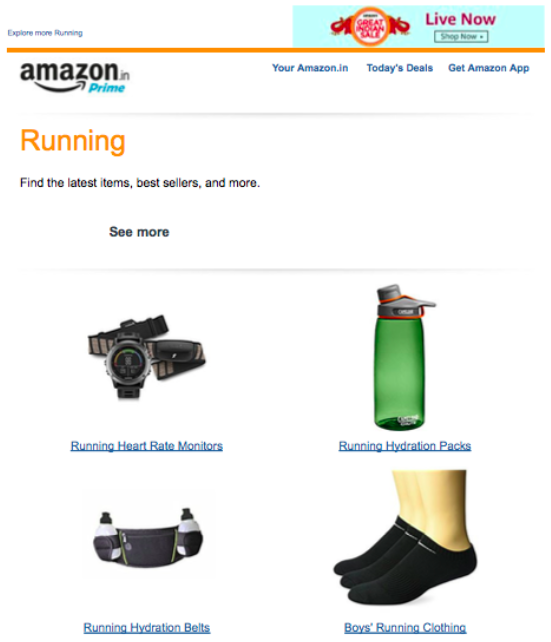
Purchase
This is it! The stage where your customer finally makes up his or her mind to buy the product from your website. This is the phase where you need to make the experience as flawless and seamless as it can be. Here’s how to do that:
Common mistakes like non-declaration of shipping charges and hidden costs like taxes can break your checkout flow and change your customer’s decision.
-
Create a Smooth Checkout Experience
Examine your checkout process, thinking like a customer and leaving no stone unturned. Common mistakes like non-declaration of shipping charges and hidden costs like taxes can break your checkout flow and change your customer’s decision. Mention all of these charges up front so they don’t feel surprised or even misled. If you’re not sure where else to start, check out this detailed guide on the anatomy of a perfect checkout page. -
Use Push Notifications and Email Reminders
If customers are abandoning their carts on your site, you can remind them that they can come back and resume the purchase. You can leverage push notification and email marketing platforms to do so. -
A/B Test Different Checkout Flows
If you find that there is a decent amount of fallback during the checkout process, it’s time to A/B test and monitor your checkout flow. By creating variations of the original checkout flow, you can find out what the optimal one looks like.
Repurchase
To maintain a great relationship with your customers and encourage them to come back, take the following steps:
-
Implement a Customer Loyalty Program
Develop a loyalty program that rewards customers for each purchase or dollar spent. A great example of a customer loyalty program is the one Starbucks uses. The program has three levels, which encourages people to pursue getting to the next level and even inspires them to post about their latest level on social media. -
Use Email Marketing
A Statista survey reveals that 91% of marketers consider email marketing a critical part of their marketing efforts.
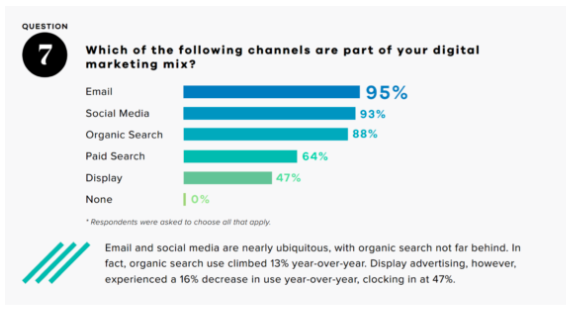
In addition, here is a distribution of conversions based on various communication channels:
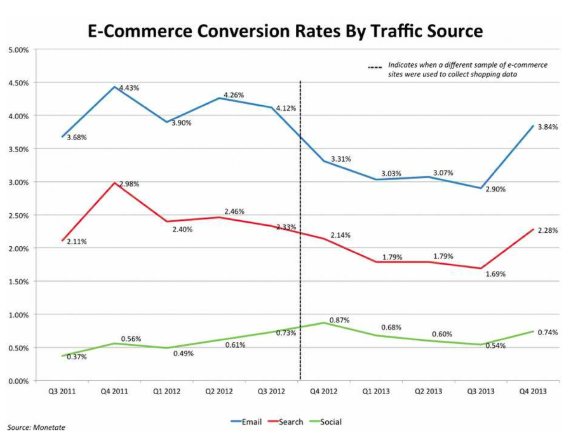
Email marketing has a pretty big lead, and for good reason: it’s only targeting the people who have already opted in. That means as new products and sales happen, you’ll be able to broadcast them to an already enthusiastic audience.
Interact With Your Customers on Social Media
Similar to email, people who have chosen to “like” or “follow” your brand on social media tend to have a reason for doing so. That makes them a powerful audience to engage with. A prime example of using social media to wow existing customers is Google Pixel’s social media campaign.
Google started the #TeamPixel trend on Twitter and Instagram. On a weekly basis, a team at Google promoted photographs clicked by Pixel users on Google’s Instagram storyboard. This created a huge following for the Pixel phones. When the second iteration of the Pixel came out, they sold out even faster than the original phones — which were already top-sellers.
Offer Discounts to Encourage Repeat Purchases
Discounts can be an effective trigger to bring back your customers, especially the ones who are temporarily inactive. Even small discounts of 10-15% can go a long way in encouraging your customers that now, not later, is the time to shop.
The beauty of a buyer's journey is that every stage is interconnected. That means improvement at one stage directly impacts the progress of other stages. Before you know it, the entire customer journey will be one that keeps people coming back again and again!
What’s your take on the buyer’s journey? Let us know in the comments section!











